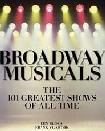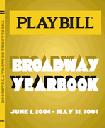SEARCH
REVIEWS
FEATURES
NEWS
Etcetera and
Short Term Listings
LISTINGS
Broadway
Off-Broadway
NYC Restaurants
BOOKS and CDs
OTHER PLACES
Berkshires
London
California
DC
Philadelphia
Elsewhere
QUOTES
On TKTS
PLAYWRIGHTS' ALBUMS
LETTERS TO EDITOR
FILM
LINKS
MISCELLANEOUS
Free Updates
Masthead
Writing for Us
A CurtainUp Review
Measure for Measure
By Shirley Safran
|
O cunning enemy, that, to catch a saint, With saints dost bait thy hook! Most dangerous Is that temptation that doth goad us on To sin in loving virtue. Never could the strumpet, With all her double vigor, art and nature, Once stir my temper; but this virtuous maid Subdues me quite. --- Angelo Act II, Scene 2 --- |

Sean McNall and Rachel Botchan in Measure for
(Photo: Matthew Shane Coleman) |
The play takes place in Vienna (read London) where the Duke Vincentio rules over a disorderly and corrupt society, in which the most stringent laws against fornication are weakening, due to the lack of observance and enforcement. He decides to leave the city for a short time, placing Angelo, his puritanical deputy, in charge, while he disguises himself as a friar in order to see and hear what is really going on. Angelo is a self-righteous, take-no-prisoners enforcer of the law. One victim of the law, Claudio, is sentenced to death for getting his lover, Juliet, with child. His virtuous and chaste sister Isabella, on the eve of entering a convent, is persuaded to beg Angelo to pardon Claudio, pointing out that mercy must temper justice (Remember Portia in Merchant of Venice?).
Angelo is implacable, as expected, but as not expected, finds himself overtaken with lust for Isabella -- precisely because of her chastity. In a subsequent scene he demands her body in exchange for leniency in Claudio’s case. The Duke, now disguised as a friar, eavesdrops on the exchange, and decides to act in order to mitigate the harshness of the circumstances. Thrown into the mix is a collection of low-lifes: clowns, bawds, drunkards and the like. One of them, Lucio, is a very soul of hypocrisy and wiliness and looms large in the enfolding of the plot.
Meanwhile, Isabella, distraught and desperate, informs Claudio of her dilemma . While sympathetic, he nevertheless prefers to live and advises that maybe she should accept Angelo’s offer. The plot twists and turns, culminating in the "bed trick" whereby Isabella agrees to a conspiracy to ensnare Angelo in sleeping not with her, but with Mariana, his betrothed from some years before whom he abandoned after her dowry was lost.
Because of its mixed tonalities, the play presents considerable directorial challenges. Director Beatrice Terry has responded with some good ideas and some inexplicable ones. Visually, the production is quite lovely. The set, a simple enclosure of gray walls, one of which is on an incline and serves as a backdrop for Angelo’s agonizing soliloquy declaring his lust for Isabella. The lighting as well, reflects the coldness of the emotional environment, underscoring the prison in which everyone seems to exist (except for the Duke, hiding in plain sight). The costumes also comment on the characters, with everyone, except the clowns and bawds, who are dressed in riotously bright colors, in dark browns and grays. Angelo, however, wears the typical black costume of the puritan, while Isabella, wears the stark white gown of the novitiate. In a short scene, the executioner, Abhorson, adopts an inexplicable "tweetie-bird"” speech pattern which, while amusing, comes across as comic shtick and is definitely not in the text.
Aside from a few line bobbles in the performance I saw, the play moves briskly with admirable clarity. As for the acting, there are some great strengths. Angelo, vile though he is, must nevertheless be believable in his passion, which is where Sean McNall is most persuasive and frightening. He literally makes you feel the horror of his physical and psychic anguish because he builds his character from the inside out. Watch him even in stillness where his concentration keeps him fully engaged. McNall is a thinking actor with great depth of feeling and technique. When he is offstage, in the middle part of the play, he is missed (he reappears at the end).
Rachel Botchan, as Isabella, grows noticeably from chilly virtue to the warm wisdom of forgiveness. Fortunately, she makes the transition feel natural and understandable, as she sheds her white marble persona. As the Duke/Friar, Ron Simons, whose part is the longest in the play, is somewhat busy and blustery, so that a certain tediousness begins to creep into his performance. I suspect the role itself is somewhat to blame. In the final reconciliation scene, everyone is paired-off: Claudio and Juliet, now parents; Angelo (who is saved from hanging by Isabella) and Mariana; and the Duke asks Isabella for her hand, which elicits the biggest and most spontaneous laughter from the audience. There is virtually no preparation in the text for this and, oddly enough, Isabella says not a word in response. As an apt directorial flourish, Isabella, bathed in a warm light (at last!) silently removes her novitiate’s veil, revealing her dark hair cascading down her back. Her face slowly changes from a perplexed frown to a knowing half-smile. Since Shakespeare gave us no clue in the text as to Isabella’s response, this is as good an ending as any.
Some scholars surmise that Shakespeare’s disposition at this time was probably not given to gaiety and levity, but rather to more serious and scabrous thoughts on human nature. Of the three "dark comedies" Measure For Measure is the most tightly structured and thematically concise (ultimately it’s about sex: "the rebellion of a codpiece"”). It is a very great play, well-presented and should be seen.
Editor's Note: For reviews of other productions of this play, and our page of more of Shakespeare's wit and wisdom, see our Shakespeare Page.
|
MEASURE FOR MEASURE Playwright: William Shakespeare Directed by Beatrice Terry Cast: Rachel Botchan, Dominic Cuskern, TJ Edwards, Holley Fain, Robert Hock, Kelli Holsopple. Romel Jamison, John Mazurek, Sean McNall, Raphael Peacock, Carol Schultz, Edward Seamon, Ron Simons, Noel Velez Set Design: Susan Zeeman Rogers Costume Design: Frank Champa Lighting Design: Stephen Petrilli Sound Design: Jane Shaw Running time: 2 hours 30 minutes, with one intermission Pearl Theatre 80 St. Marks Place at 1st Avenue. 212/598-9802. www.pearltheatre.org From 2/23/06 to 4/09/06; opening 3/05/06 Reviewed by Shirley Safran based on March 4th press performance |
The Internet Theatre Bookshop "Virtually Every Play in the World" --even out of print plays

Easy-on-the budget super gift for yourself and your musical loving friends. Tons of gorgeous pictures.

6, 500 Comparative Phrases including 800 Shakespearean Metaphors by our editor.
Click image to buy.
Go here for details and larger image.








